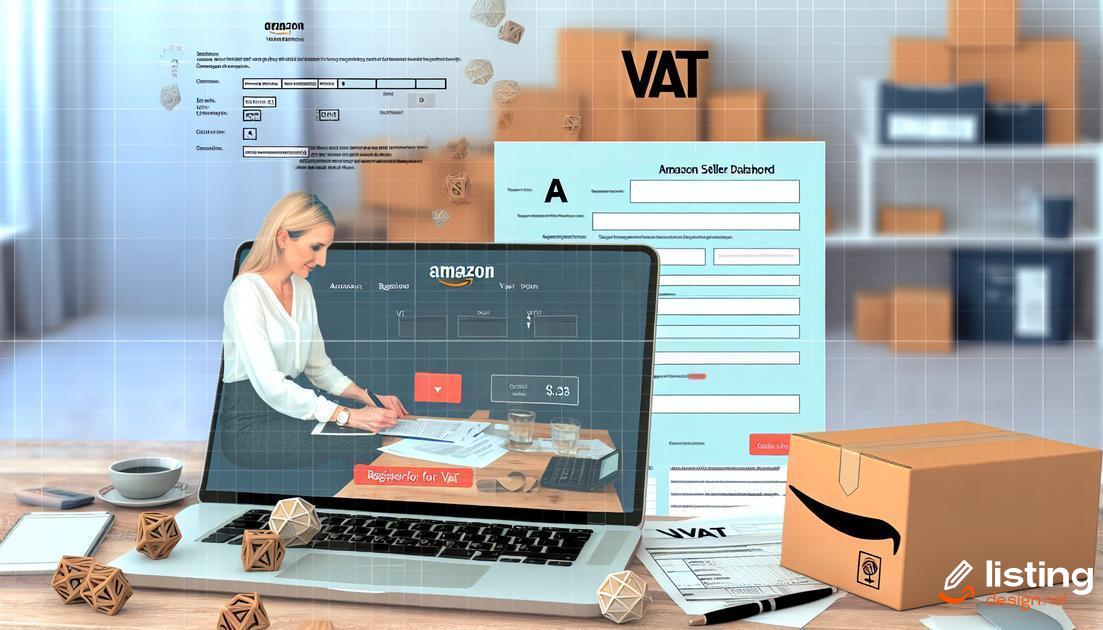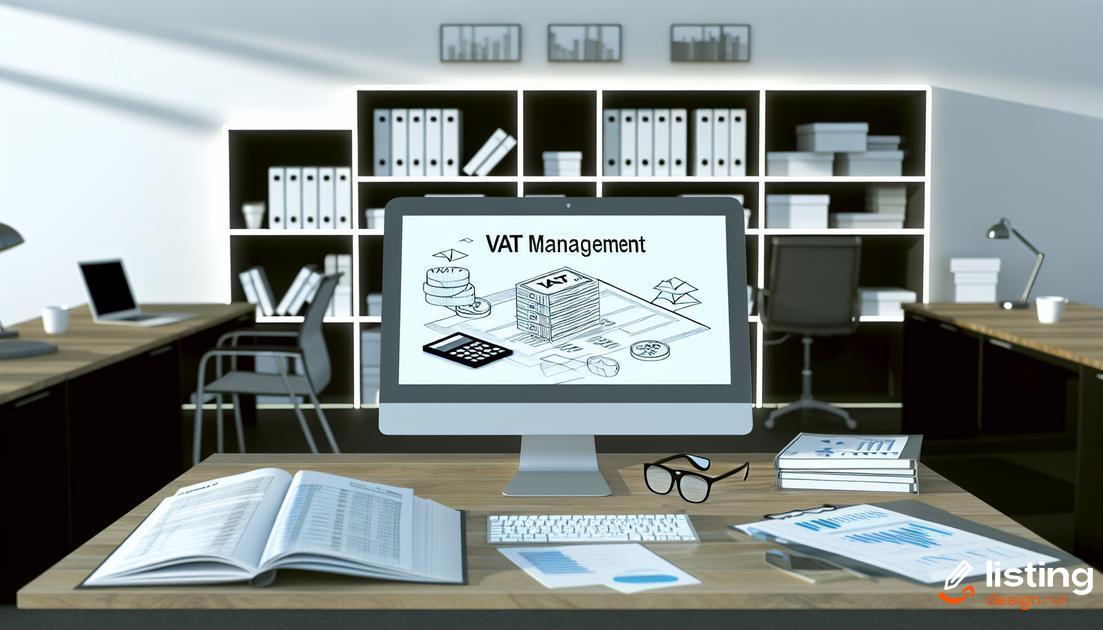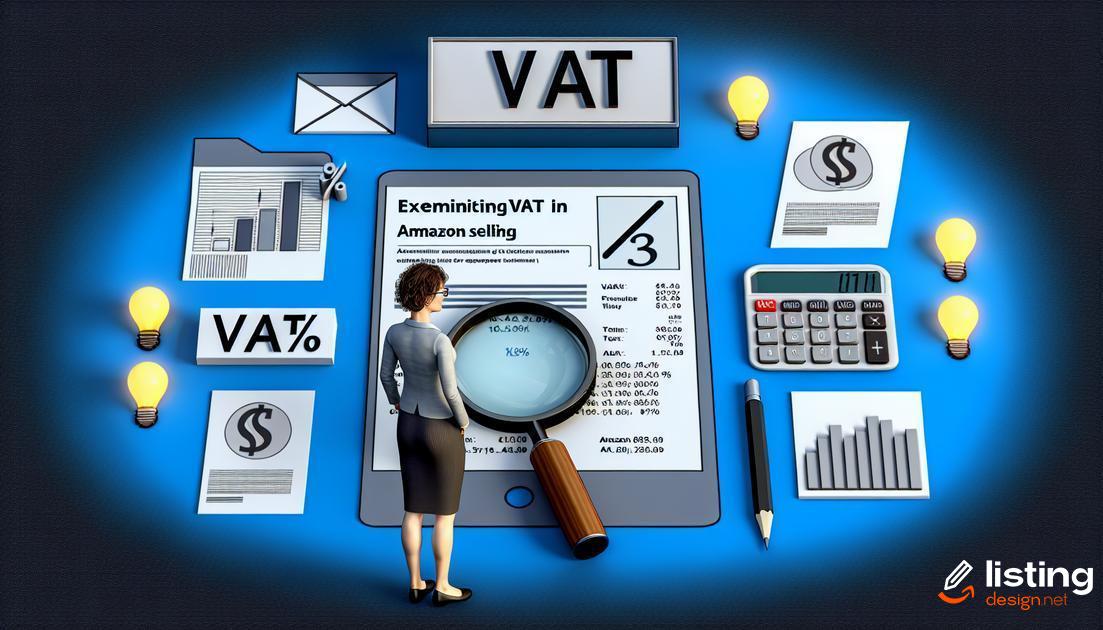As an Amazon seller, understanding VAT (Value Added Tax) is crucial for your business’s success. Not only does it ensure compliance with tax laws, but it also helps in avoiding potential fines and legal issues. In this post, we’ll break down everything you need to know about VAT as an Amazon seller, from registration to compliance and beyond. Keep reading to stay informed and make the most of your e-commerce business.
Table of Contents
What is VAT and Why It Matters for Amazon Sellers
VAT (Value Added Tax) is a tax that is applied to the sale of goods and services. For Amazon sellers, understanding VAT is crucial because it affects pricing, profitability, and compliance.
One significant reason why VAT matters is that it is not always included in the listed price of products on Amazon, which can cause confusion for both buyers and sellers. Sellers need to comprehend the VAT implications on their sales to set competitive prices while ensuring they remain compliant with tax regulations.
Moreover, Amazon sellers operating in different countries must adhere to each country’s VAT rules and regulations, making it essential to understand local VAT requirements. Registration for VAT might be necessary depending on where you sell and the total revenue generated. Compliance involves regular submission of VAT returns and accurate record-keeping to avoid fines and penalties.
Why It Matters
Failing to correctly manage VAT can lead to severe consequences, including financial penalties and suspension of your selling account on Amazon. Being VAT-compliant also builds trust with your customers and enhances your business’s credibility.
How to Register for VAT as an Amazon Seller

Registering for VAT as an Amazon seller involves several steps that are crucial for compliance and smooth business operations.
Step 1: Determine If You Need to Register
The first step is to determine if you are required to register for VAT. This depends on various factors such as your country of residence, the location where your goods are stored, and your annual sales volume. In the European Union, for instance, you must register if your sales exceed the local VAT threshold in any member state.
Step 2: Collect Necessary Information
You’ll need to gather all required information for the registration process. This typically includes your business details, personal identification, and possibly proof of your business activities. Accurate documentation can expedite your registration process.
Step 3: Choose a VAT Scheme
Select the appropriate VAT scheme based on your business model. Common schemes include the Standard VAT Accounting scheme, Flat Rate scheme, and the VAT Margin scheme. Each has its own set of rules and benefits, so choose one that best fits your business needs.
Step 4: Complete the Registration Application
Submit your registration application to the relevant tax authority. Most countries offer online registration options which can significantly simplify the process. Ensure all information is accurate to avoid delays or rejections.
Step 5: Understand Your VAT Obligations
Once registered, you’ll receive your VAT number and be required to comply with VAT regulations. This includes issuing VAT invoices, keeping accurate records, and filing regular VAT returns. Understanding your obligations can help prevent costly mistakes.
Note: Failing to register for VAT when required can result in serious penalties, so it’s essential to stay informed and compliant.
Understanding VAT Rates and Calculations
VAT rates vary depending on the country and the type of goods or services you are selling. When selling through Amazon, it’s essential to know the correct VAT rate that applies to your products. Most European countries have a standard VAT rate ranging from 17% to 27%, but some items may qualify for reduced rates or exemptions.
To calculate VAT, you need to apply the appropriate VAT rate to your product’s price. For instance, if you are selling an item for €100 in a country with a 20% VAT rate, the VAT amount would be €20. This makes the total price €120 for the customer. Ensure your product pricing reflects these calculations unless Amazon’s marketplace handles the VAT for you, as with the Amazon VAT Calculation Service (AVCS).
VAT-inclusive pricing: This method includes the VAT in the advertised price. For example, if an item’s price is €120 (including 20% VAT), the base price is €100, and the VAT portion is €20. This approach is user-friendly but requires accurate calculations to ensure compliance.
VAT-exclusive pricing: Some sellers prefer showing prices without VAT, adding it during checkout. This could be seen in B2B transactions where businesses can claim back VAT. Ensure clarity to avoid confusion for your customers.
Finally, keep detailed records of all VAT transactions for accurate reporting and compliance. Properly understanding VAT rates and calculations ensures your business operates smoothly and avoids potential legal issues.
How to Handle VAT Compliance and Reporting

Handling VAT compliance and reporting involves understanding the requirements set forth by tax authorities in each country where you sell. Compliance ensures that your business operates legally and avoids penalties. Key aspects include:
- Monitoring Sales Thresholds: Different countries have thresholds that, once exceeded, require VAT registration. Track your sales to know when you cross these limits.
- Invoicing: Ensure each invoice contains all mandatory details such as VAT amount, seller’s VAT number, and buyer’s information. Correct invoicing is crucial for both compliance and customer trust.
- Record Keeping: Maintain accurate records of all transactions, as VAT authorities might request them for audits. This includes keeping copies of invoices, sales records, and proof of VAT paid on business expenses.
-
VAT Returns:
File regular VAT returns, usually quarterly, detailing the VAT collected from sales and the VAT paid on purchases. This process involves calculating the net VAT payable or reclaimable.
- Payment Deadlines: Adhere to the payment deadlines for remitting VAT collected. Late payments can result in fines and interest charges.
The ultimate goal is to ensure that your VAT affairs are in order, enabling smooth operations and avoiding legal issues as an Amazon seller.
The Consequences of Failing to Comply with VAT Regulations
Non-compliance with VAT regulations can result in severe financial and legal consequences for Amazon sellers. Penalties and Fines are the most immediate repercussions. Tax authorities can impose hefty fines, sometimes amounting to a significant percentage of the unpaid VAT. Additionally, interest on overdue VAT can accumulate over time, increasing your financial burden.
Beyond financial penalties, there is also the risk of legal prosecution. In extreme cases, continuous non-compliance can lead to criminal charges, which could include imprisonment. Furthermore, being flagged for non-compliance can damage your reputation as a seller on Amazon, leading to potential suspension or even a permanent ban from the platform. This disrupts your business operations and can cause loss in revenue.
Another critical aspect is the administrative burden that comes with rectifying past mistakes. You may have to undergo thorough audits and provide extensive documentation to tax authorities. This consumes valuable time and resources which could be better spent on growing your business.
For businesses engaged in cross-border transactions, non-compliance can also lead to international complications. Different countries have different VAT laws, and failing to comply with regulations in one country can affect your operations in others. Ensuring compliance helps in maintaining smooth international business operations and avoids unnecessary complications.
All these factors underline the importance of adhering to VAT regulations. Proper compliance not only keeps you clear of legal and financial troubles but also promotes trust and reliability in your business practices.
Tips for Managing VAT Efficiently as an Amazon Seller

Automate Your VAT Calculations
,
Using automated tools can help you stay on top of your VAT calculations. These tools reduce the risk of errors and ensure timely submissions. Many software options are compatible with Amazon’s platform, making integration seamless and effective.
,
Stay Updated with VAT Regulations
,
VAT regulations can change frequently, and it’s crucial to stay informed. Subscribing to relevant newsletters and attending workshops or webinars can help you stay current with the latest VAT rules and requirements.
,
Keep Accurate Records
,
Accurate record-keeping is vital for VAT management. Ensure all transactions are documented and receipts are stored properly. This practice not only aids in VAT calculations but also prepares you for any potential audits.
,
Consult with a VAT Professional
,
Consulting a VAT specialist can provide in-depth insights and personalized advice. They can help optimize your VAT strategy and ensure compliance with all necessary regulations.
,
Monitor Your VAT Liabilities
,
Regularly review your VAT liabilities to avoid unexpected bills. Keeping an eye on your obligations helps in budgeting and financial planning, ensuring you’re never caught off guard by VAT payments.
,
Use VAT-Friendly Pricing Strategies
,
Implement pricing strategies that take VAT into account. Whether it’s adjusting your pricing structure or offering VAT-inclusive pricing, these strategies can help maintain profitability while managing VAT obligations.
,
Timely VAT Filing
,
Ensure you file your VAT returns on time to avoid penalties. Setting calendar reminders or using automated software can help you adhere to deadlines and maintain compliance.
Common VAT Mistakes and How to Avoid Them
Making mistakes with VAT can be costly for Amazon sellers. One common error is registering for VAT in the wrong country. Ensure you understand where your sales are happening and register in those countries accordingly. Another frequent mistake is incorrectly calculating VAT due to misinterpreting rules. Always double-check the current VAT rates and apply them correctly to your products.
Some sellers forget to update their VAT records regularly, leading to discrepancies. It’s crucial to keep detailed and updated VAT records to avoid compliance issues. Additionally, missing VAT filing deadlines can result in penalties. Set reminders and use automated tools to ensure timely submissions.
Many sellers overlook the importance of understanding the differences between VAT exclusive and inclusive pricing. This can lead to undercharging or overcharging customers. Clearly label your prices to reflect VAT inclusion accurately. Finally, failing to utilize available tools and resources for VAT management can increase your workload and risk of errors. Invest in reliable VAT management software to streamline your processes.
Tools and Resources for Simplifying VAT Management

Managing VAT can be complex, but there are several tools and resources designed to simplify the process for Amazon sellers. Utilizing these can save time, reduce errors, and ensure compliance. Here are some essential tools and resources:
-
Automated VAT Software
Many software solutions can automate VAT calculations, returns, and filings. These tools are designed to integrate with Amazon, making it easier to track VAT on sales, returns, and other transactions.
-
VAT Compliance Services
Some companies offer services tailored to Amazon sellers for handling VAT compliance. These services can include registering for VAT in multiple jurisdictions, managing filings, and keeping records.
-
Accounting Software
Solutions like QuickBooks and Xero can help manage accounting and VAT calculations effectively. These software options often come with features to automate VAT-related tasks, ensuring accuracy and compliance.
-
Professional Tax Advisors
Consulting with tax advisors who specialize in VAT for e-commerce can provide personalized guidance and strategies. They can help with everything from registration to ongoing compliance and audit preparation.
-
HMRC and Government Resources
The official websites of tax authorities like HMRC offer a wealth of information, guidelines, and tutorials on VAT. These resources can be invaluable for understanding the specifics of VAT regulations and staying updated with any changes.
-
Online VAT Calculators
These tools are great for quick VAT calculations, helping sellers determine how much VAT needs to be charged and reported for their products and services.
-
Educational Webinars and Courses
Many organizations offer webinars and courses focused on VAT for Amazon sellers. These can be a great way to stay informed about best practices and emerging trends in VAT management.


